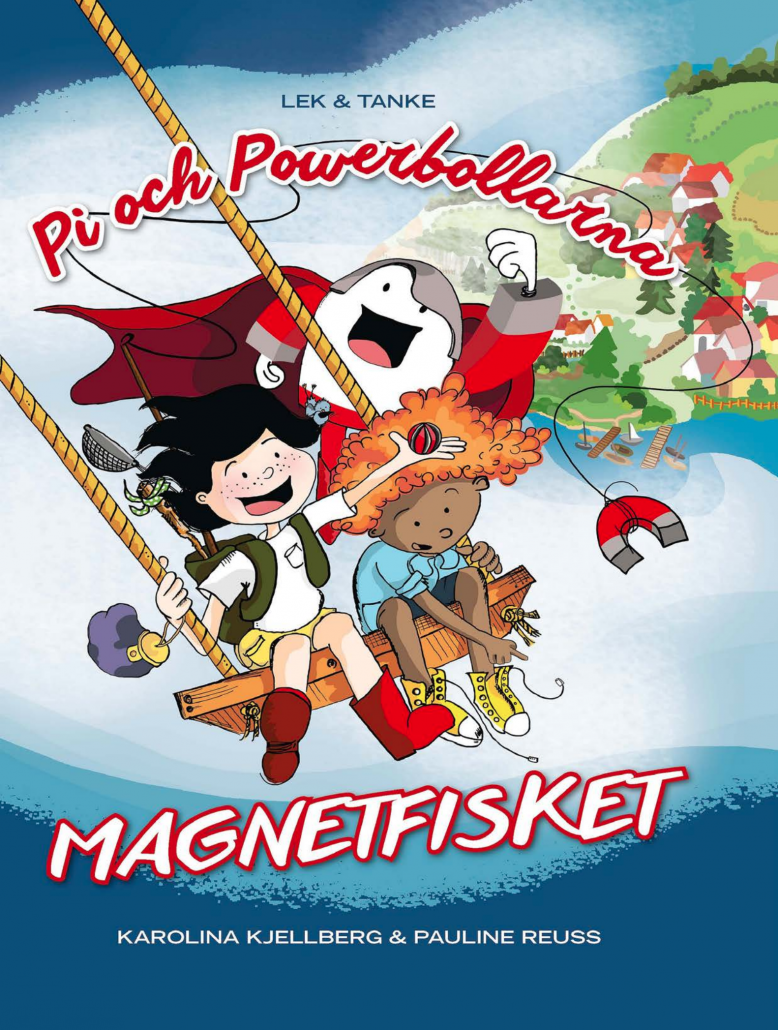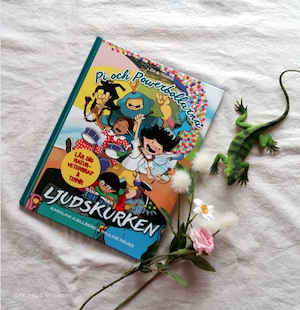“bNosy is our extra child, passion, dream and daily job” – an interview with Karolina Kjellberg
Karolina Kjellberg and her team mates of bNosy “are on a mission to get kids passionate about science and technology through entertainment”. They do so by producing edutainment in the form of e.g. books, apps and videos, and engaging in workshops and other activities.
Karolina Kjellberg lives in London and has a PhD in Pharmaceutics from UCL, but grew up and took her MSc in Stockholm. Crastina got in touch for a couple of email questions.
 Hi Karolina, tell us a little about bNosy and the people behind it!
Hi Karolina, tell us a little about bNosy and the people behind it!
We are three energetic mothers with backgrounds from engineering, science and illustration, running this virtual business from the UK and Sweden. bNosy is our extra child, passion, dream and daily job. Every day and together with my brilliant two business partners, Anna Colbiörnsen and Pauline Reuss, I am working hard to get kids passionate about STEAM (science, technology, engineering, arts and maths). Explore, play and learn is at the core of bNosy where we create edutainment supporting the science curriculum for children aged 3–9. What we make has to be things that kids truly enjoy, such as richly illustrated and action filled storybooks, fun app games, exiting experiment videos, lively music and creative activity books.
How was the idea of bNosy conceived?
Our idea was born three years ago when we got fed up by reading news about school children failing international tests in science. We started thinking of how we – as mothers and engineers – could improve the situation. We realised that there was a lack of fun fiction books with science content and got inspired by the best way our own children learnt, which was through fun and play. We decided to bridge the gap between school and after school activities, invested our own capital and started developing products with our team of game designers, illustrators, educators and scientists.
How many books have you published so far? What have you learned on the way?
As a result of the three storybooks we have published, the list of things learnt is endless. But let’s choose two lessons learnt. Firstly, it is easy to have great ideas, but it takes time, money and energy to turn them into reality, so you just have to stick in there and find the right ways. Secondly, external advice is great but spending too much time listening to others is a waste when you can spend that time turning your own ideas into reality.
Please tell us about the school material you have developed with the books as a platform.
We have created a new concept where children learn STEAM through fun and play. Our school material supports the curriculum and consists of story books, experiment videos, app games, music, activity books, and teacher guidelines. The core is our richly illustrated story books, Pi and the Power Pals (Swedish title: Pi och Powerbollarna). In our teacher guidelines detailed lesson plans are given to demonstrate how the various media can be combined and integrated for optimal learning. We are amazed to see how much theory children learn with something as simple as likeable and cool characters. Teachers find our books great teaching tools since we have already connected the stories to the curriculum and provided lesson plans that saves them time. Our school material is constantly developed but currently we have material in three areas (magnetism, materials, sound) out of at least ten planned. So, stay tuned!
What have you, as an adult, learnt from children when it comes to the art of explaining science?
They will understand it and love it as long as you keep it simple, fun and show your passion for science. Children is the best audience since their honesty is 100%. They are natural scientists, little explorers but we as adults prevent them from learning by our ignorance or us making science too complicated or boring.
Please give three pieces of advice to a person who wants to produce a science book for kids!
- Learn to write! If you never wrote a book, join a writing class and read a lot of books for your aimed age group.
- Do your research! Find science content in reliable sources and ensure you know the science you want to communicate before you simplify it. Finally, get experts in the field to proofread your text.
- Find focus groups! Before you try to find a publisher, try your book on the audience since they will be honest with you. Simple illustrations may help.
Finally: Which are your three favourite science books for children? How come?
- Ada Twist Scientist by Andrea Beatty (3-6 yrs) is an excellent book. It is written in brilliant rhyming, has charming illustrations and is about a strong girl who is passionate about science.
- Ett litet frö by Sara Gimbergsson (0-3 yrs) is so simple but yet so great. With beautiful illustrations and a clever story, the life of a seed growing into a flower is shown.
- George and the big bang by Lucy and Stephen Hawking (9-12 yrs) brings you into an exciting space adventure while learning about the Big Bang theory and cosmos. It has illustrations appealing to children and is one of the best fiction books communicating science that I have read.





Leave a Reply
Want to join the discussion?Feel free to contribute!